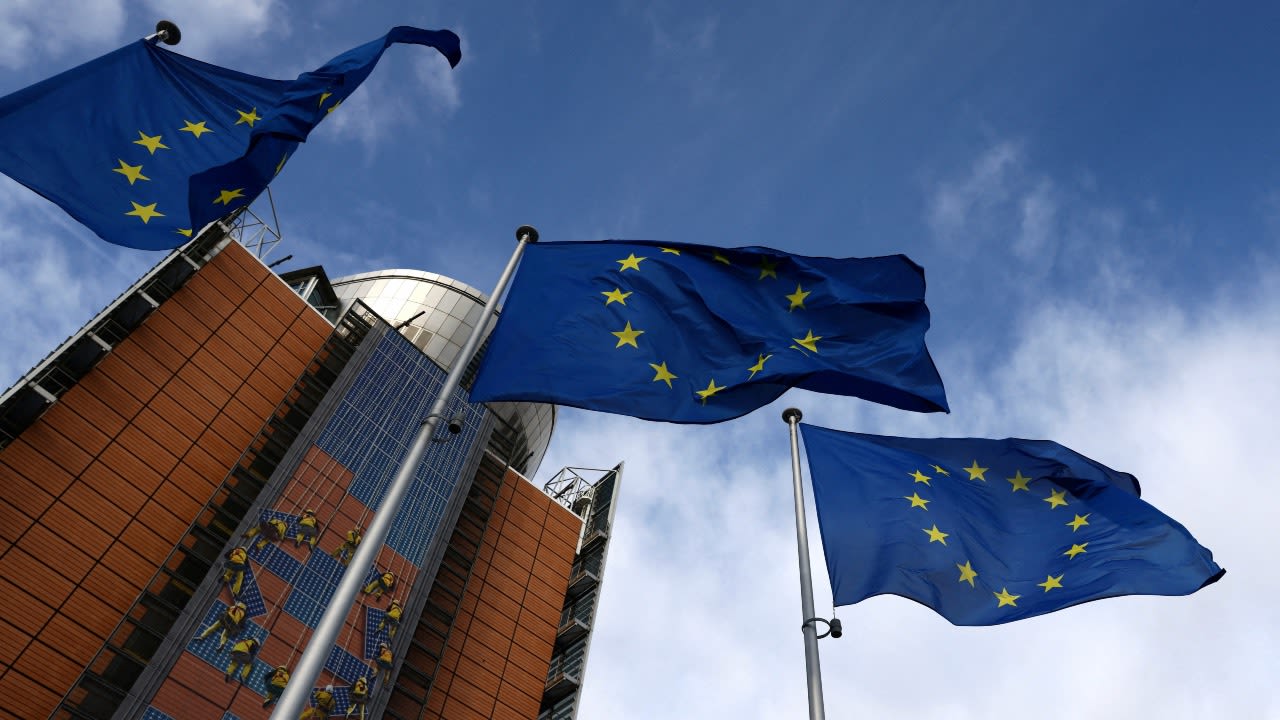UKRAINE: ONE YEAR ON
After a year of air bombardments, shelling and heavy fighting, Ukraine is shattered but the conflict marches on.
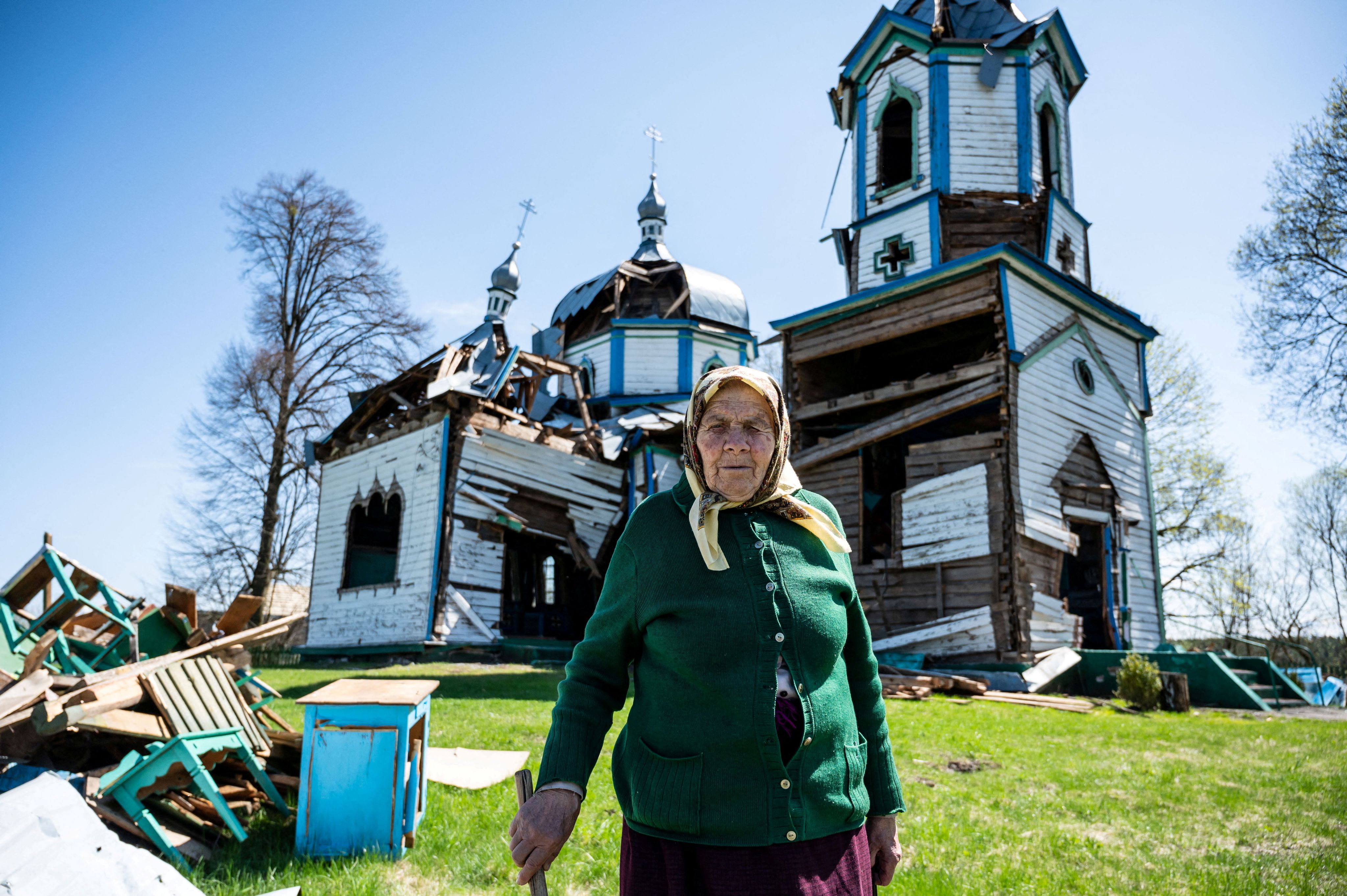
THE COSTS
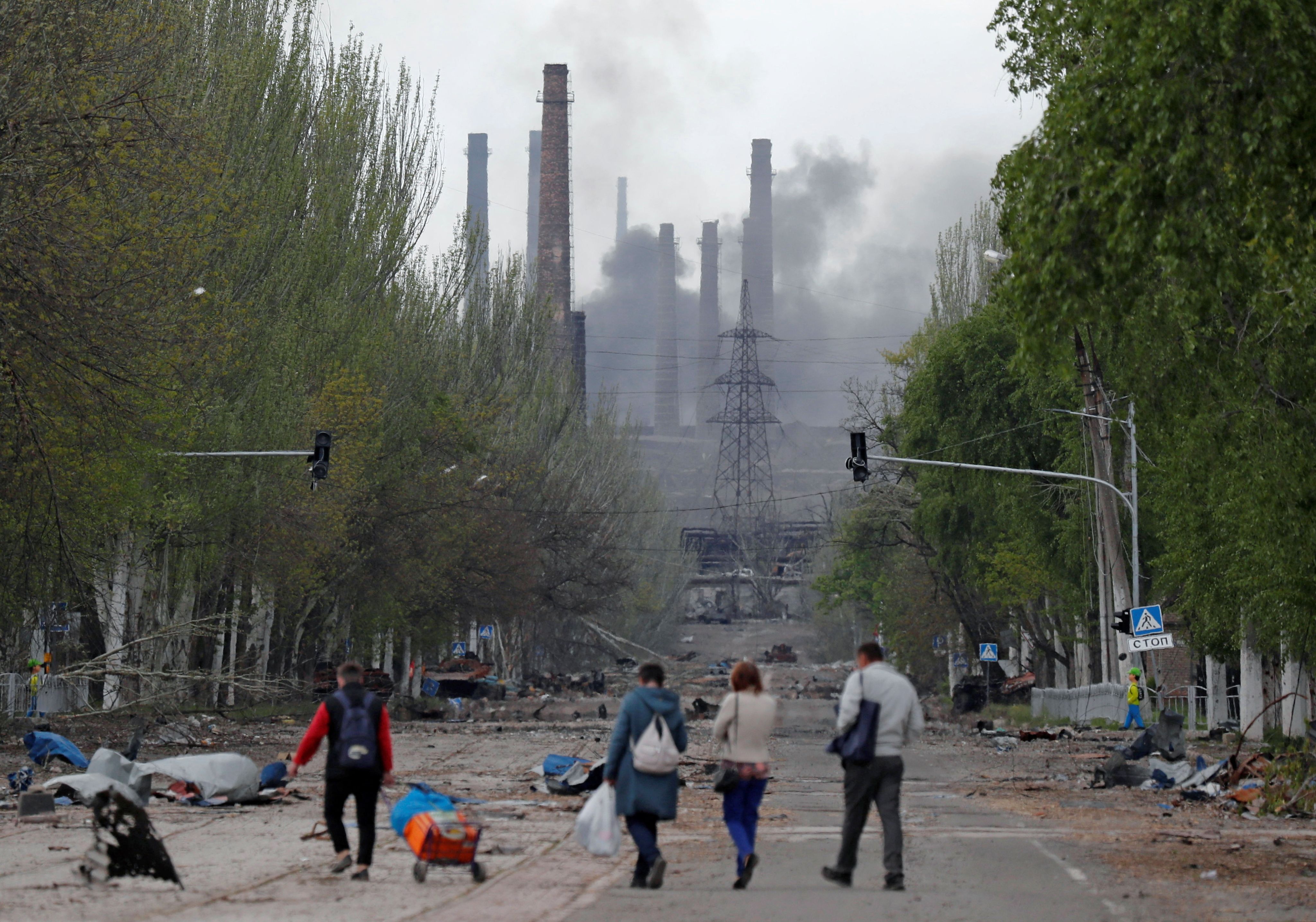
The human cost is estimated to be at least 18,955 civilian casualties, according to the United Nations Office of the High Commissioner for Human Rights (OHCHR). This includes 7,199 killed and 11,756 injured, but the actual casualty figures are believed to be considerably higher.
By the end of 2022, it is estimated the damage to Ukraine housing facilities had reached $54 billion, while the damage to physical infrastructure was estimated to be $138 billion.
The estimated damage to Ukraine's GDP in 2022 is a retraction of 35 percent.
Meanwhile, Russian President Vladimir Putin has played down the effects of sanctions on the Russian economy – but 335 foreign companies completely withdrew from Russia in 2022.
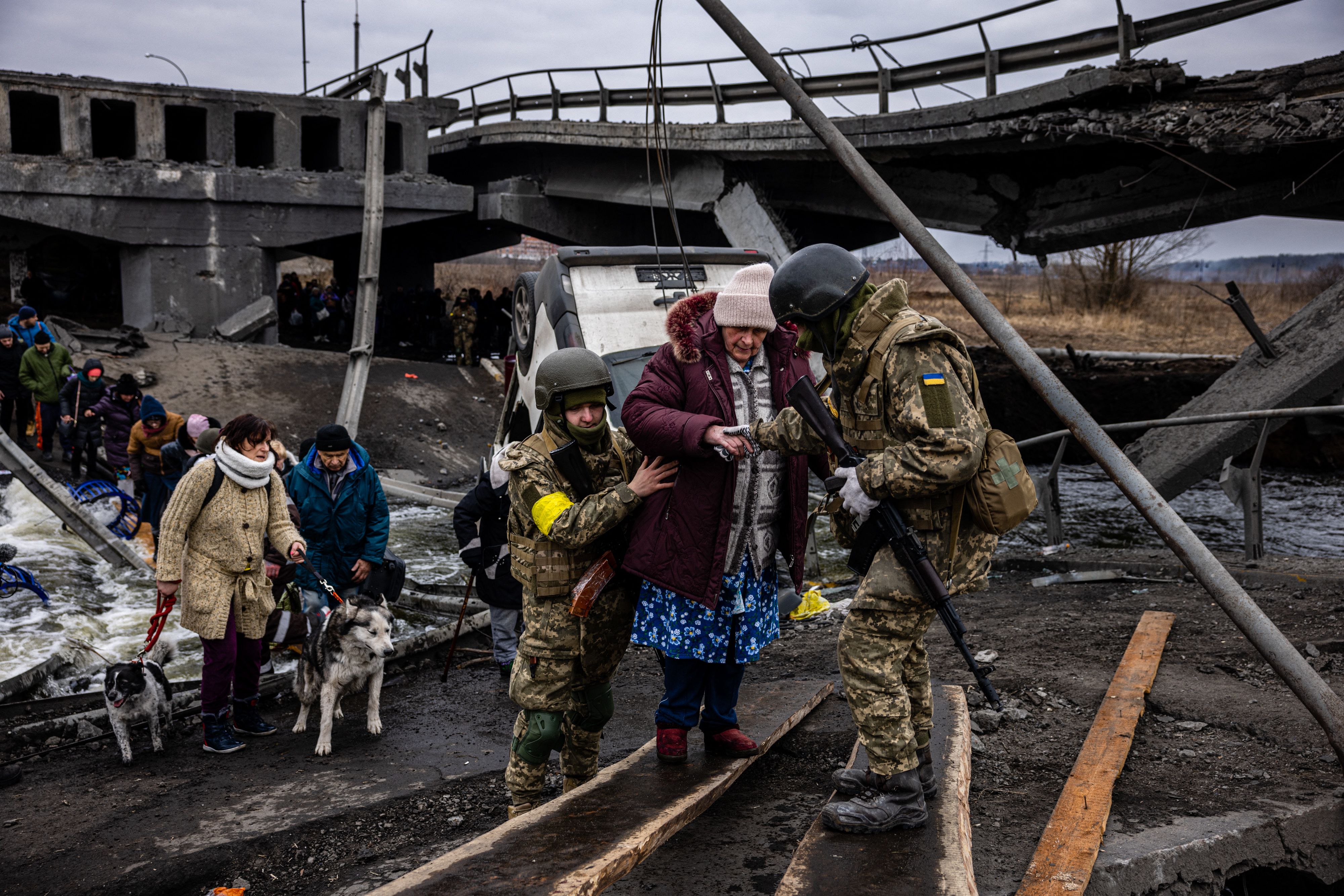
People flee from Dimitar Dilkoff/AFP
People flee from Dimitar Dilkoff/AFP
Edited by Butchy Davy
Edited by Butchy Davy
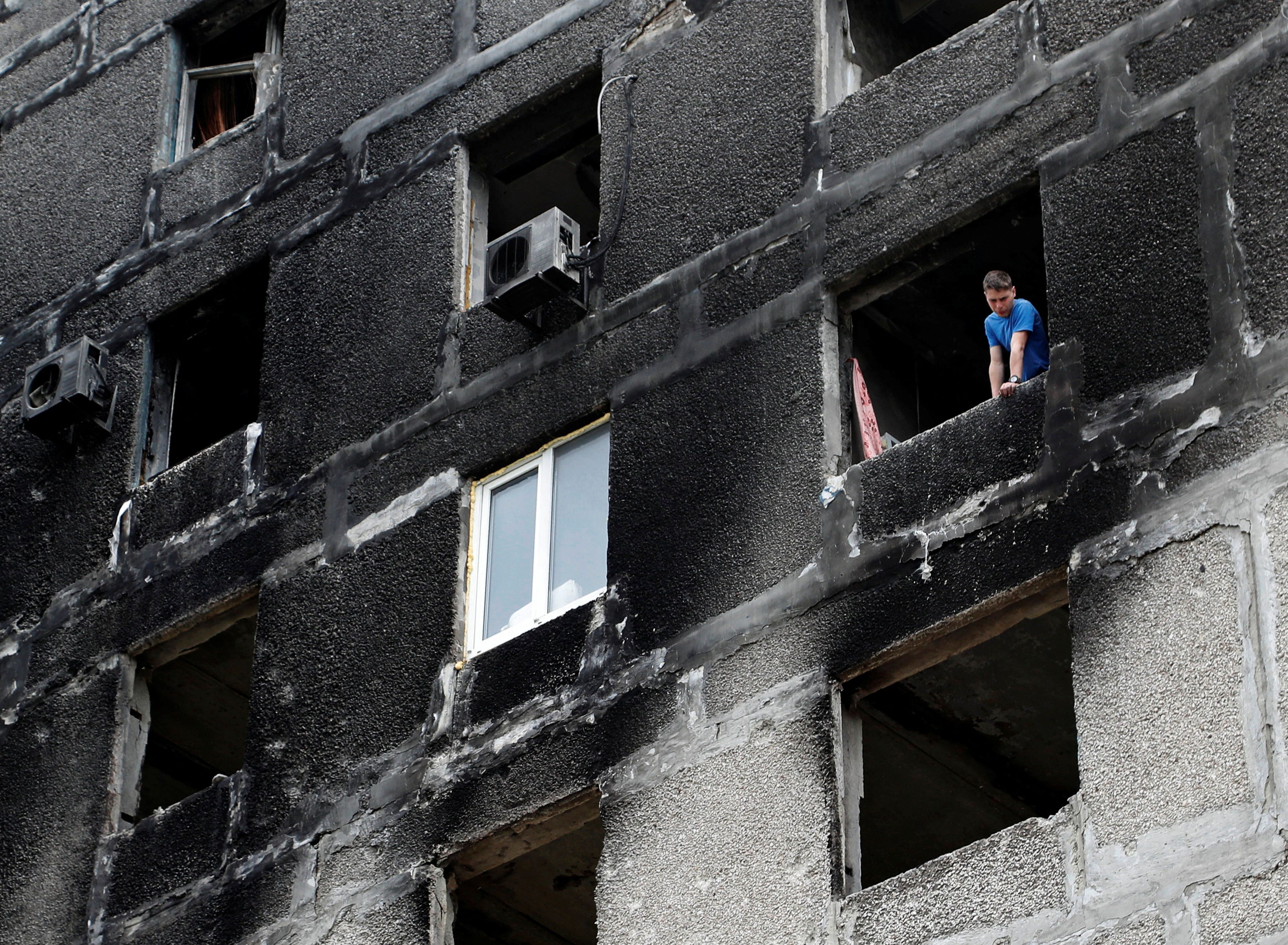
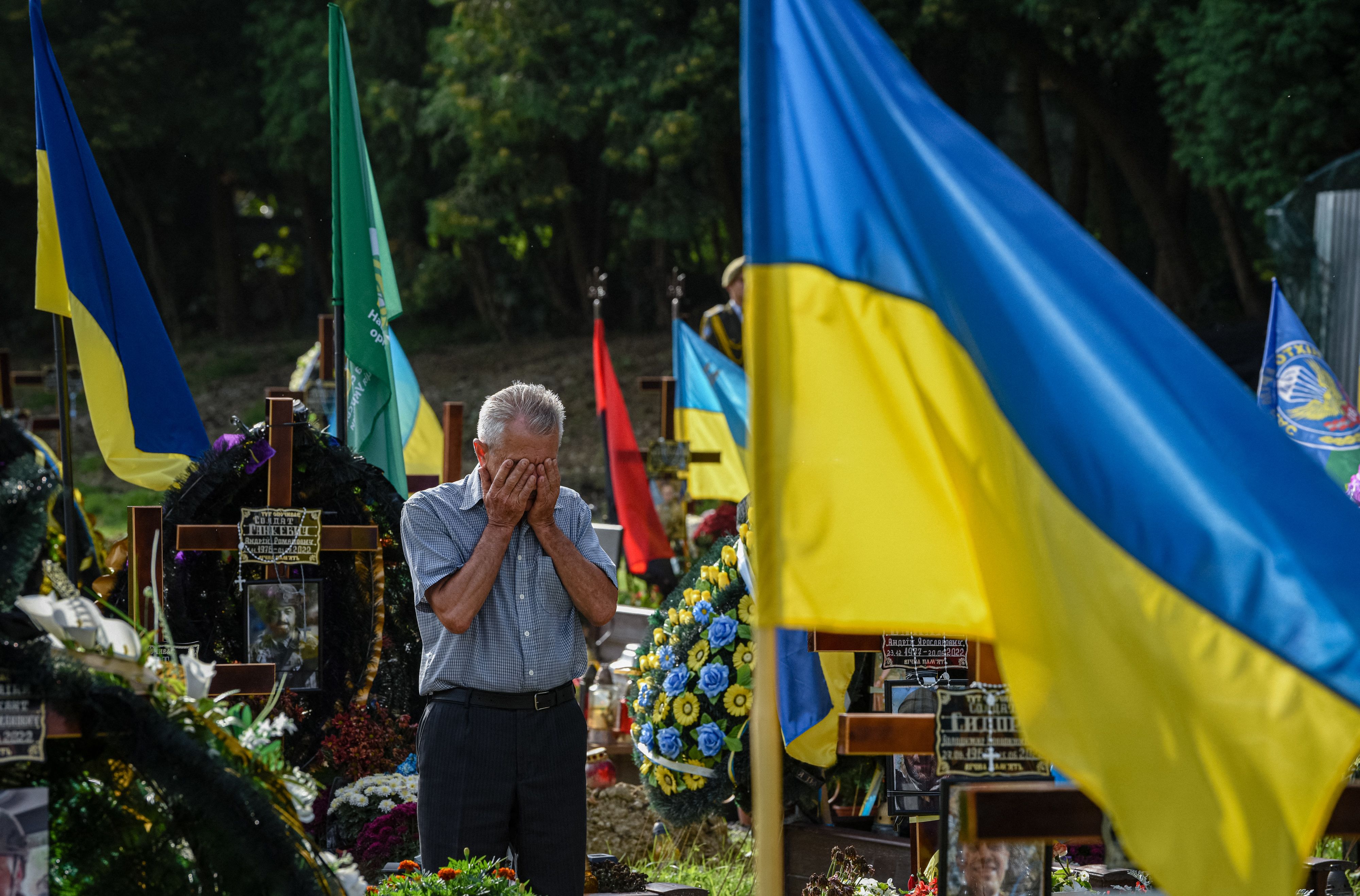
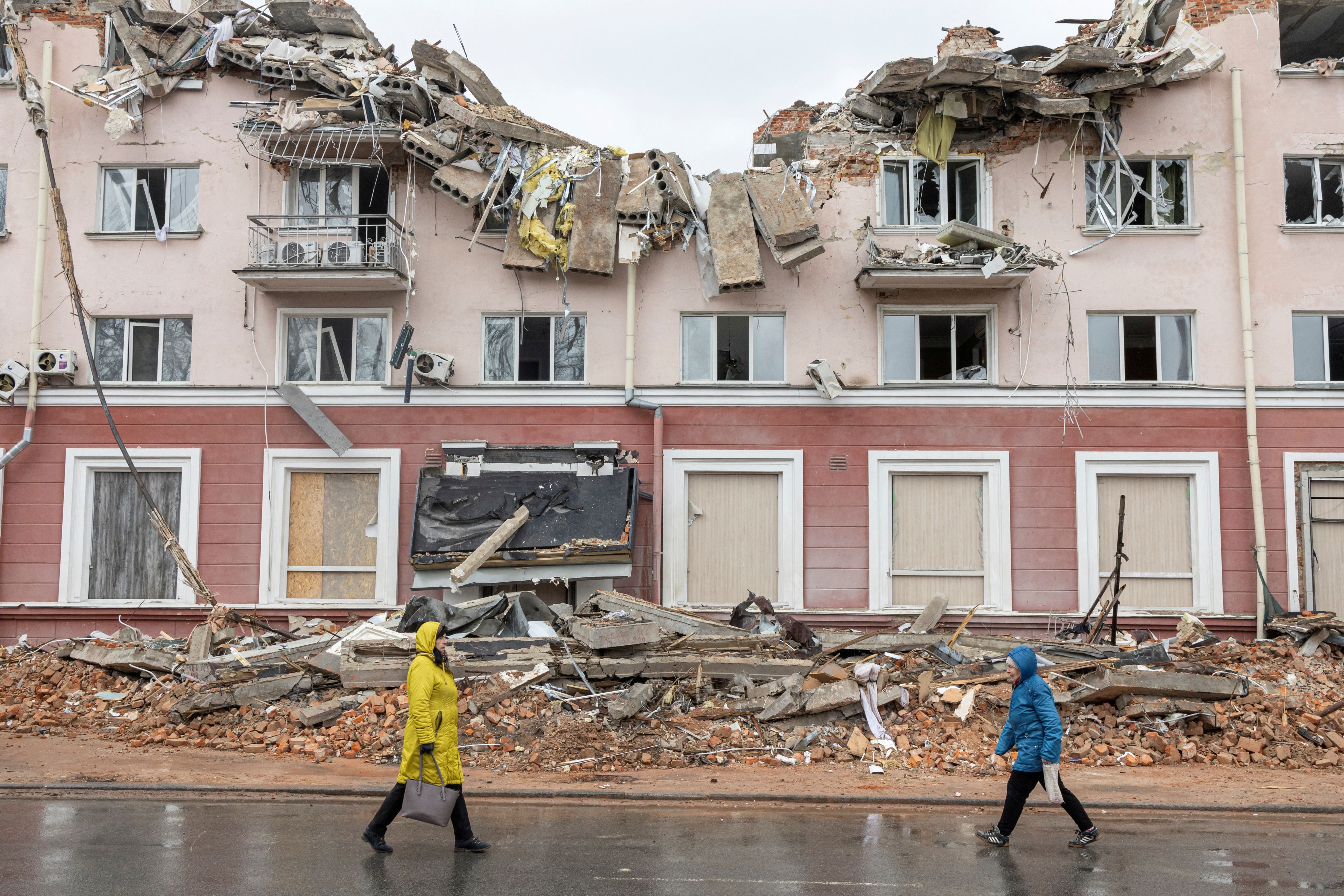
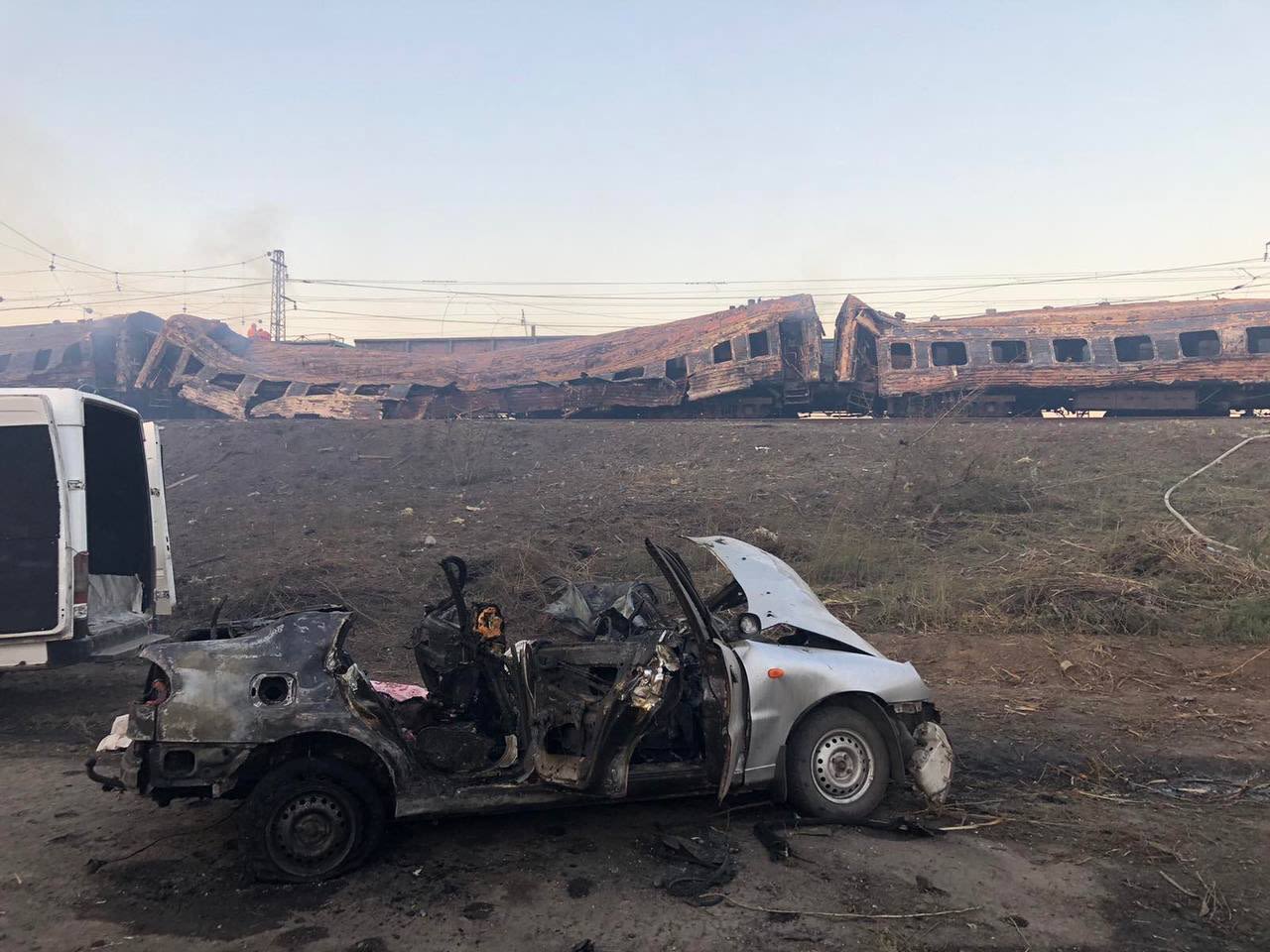
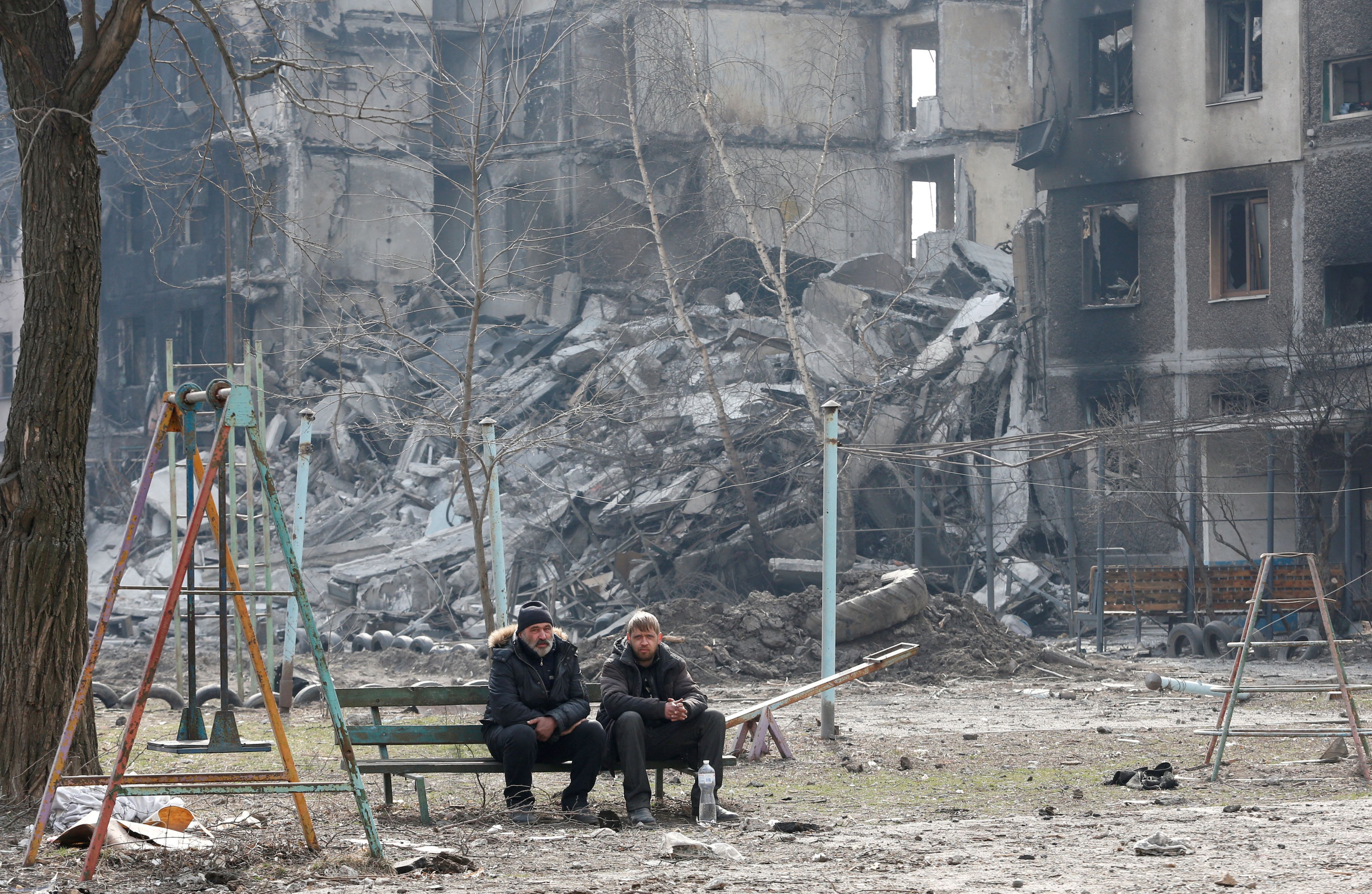

An apartment building heavily damaged during the Ukraine-Russia conflict in Mariupol. /Alexander Ermochenko /Reuters
An apartment building heavily damaged during the Ukraine-Russia conflict in Mariupol. /Alexander Ermochenko /Reuters

A man cries during a ceremony for the fallen soldiers of Ukraine in Lviv. /Yuriy Dyachyshyn/AFP
A man cries during a ceremony for the fallen soldiers of Ukraine in Lviv. /Yuriy Dyachyshyn/AFP

Women walk along a street in front of the destroyed Hotel Ukraine in Chernihiv.
Women walk along a street in front of the destroyed Hotel Ukraine in Chernihiv.

Remnants of a train hit by Russian missile strikes. /Dymytro Kuleba/Twitter
Remnants of a train hit by Russian missile strikes. /Dymytro Kuleba/Twitter

Local residents sit on a bench in Mariupol March 22. /Alexander Ermochenko/Reuters
Local residents sit on a bench in Mariupol March 22. /Alexander Ermochenko/Reuters
Izium: 'The situation is dire'
By Iolo Ap Dafydd in Izium
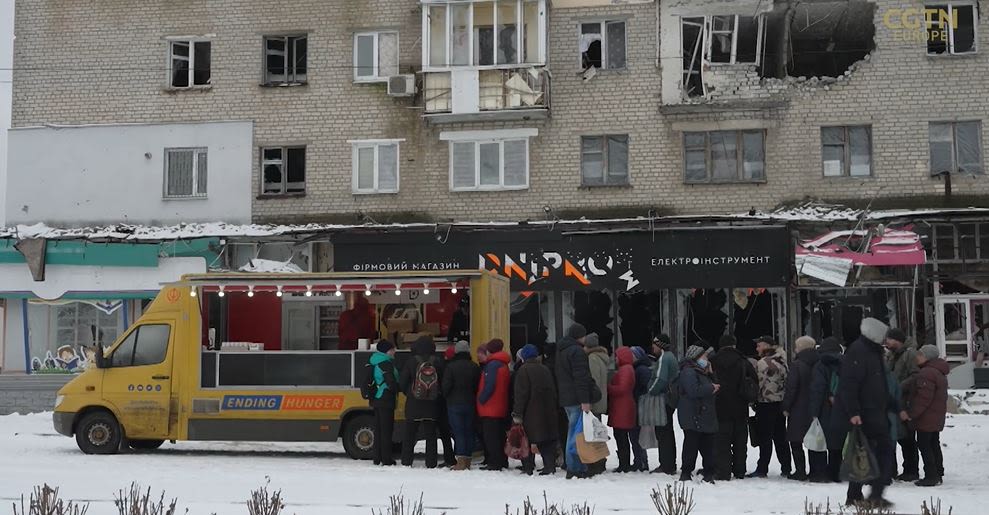
Ukrainians battle to rebuild liberated Izium amid $2bn in damages
It could cost approximately $2 billion to rebuild the liberated city of Izium in northeast Ukraine.
Over the last year, 80 percent of the city has been damaged, according to the regional mayor.
Six months after Russian troops were forced to flee the city, locals and the authorities have been left to count the costs of the fighting there.
As well as new construction, the economy too will have to be rebuilt. Some businesses are starting to come back to life, but the road to repair is a long one.
Mechanics are getting busier, as more vehicles need repairs during the winter months.
Six months ago, almost everything in Anatoliy Zhidkov's business had been stripped and stolen, the occupation setting him back by 20 years.
"The situation is dire," he says. "We have suppliers who have been our partners for a long time. They met us and gave us goods to sell with deferred payments. That's how we've been helped."
However, Zhidkov says the exodus of people from the city, including many of his clients, has made it difficult to get his business on track.
That's on top of the $400,000 in damages he estimates the conflict has cost him.
"But you need to work," he says. "We hope that they will start to come back."
On Izium's main square, a hospital, school and the municipality offices were bombed. The local authority has the unenviable task of prioritizing what to do first, including creating work opportunities.
"I think we will need several billion dollars," says Valeriy Marchenko. "In addition to many multi-apartment residential buildings, the infrastructure is also destroyed, including primary and nursery schools, as well as heating stations."
New homes will also be needed across the region. On the city's outskirts, the village of Kamenka used to have 450 houses and twelve hundred residents. Just eleven people live there now.
And for many, dark shadows from the days of occupation persist. Some locals say they were tortured by Russian secret service agents last year while the city was under Moscow's control.
Beyond the emotional scars, the fighting to regain control of Izium caused severe structural damage, with much of the rubble yet to be removed to make way for new construction.
Local authorities say the task is enormous. Hundreds of millions of dollars are needed to repair and rejuvenate Izium alone.
The full cost of the city's reconstruction is yet to be determined, and financial help will be expected from the Ukrainian government.
But how many investments can be made while Ukraine is still spending so much on fighting the conflict?
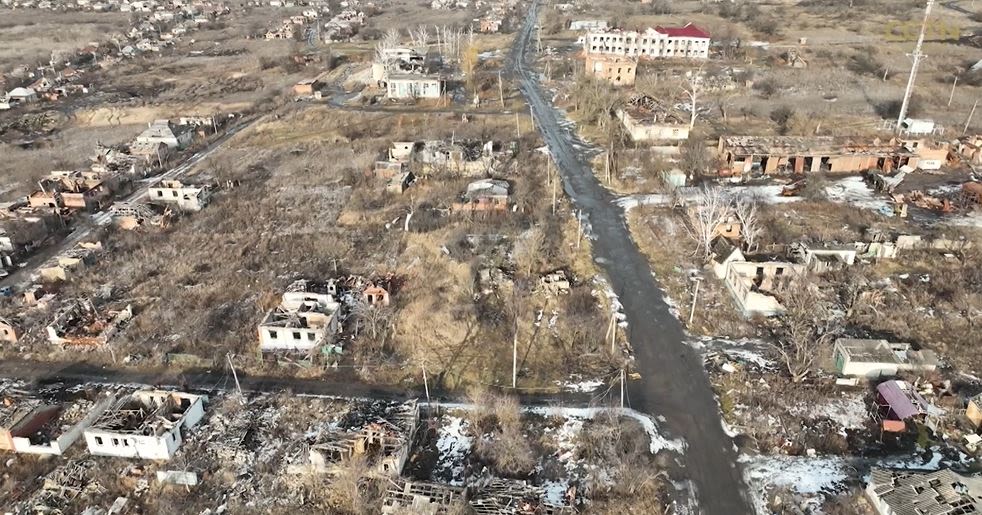
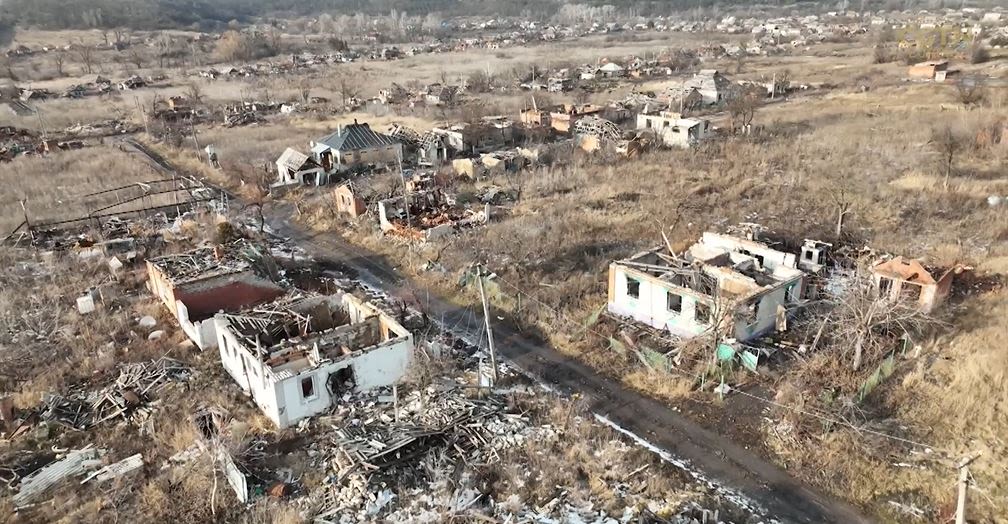
LIVING ON THE FRONT LINE
Iolo ap Dafydd in Chasiv Yar, Ukraine
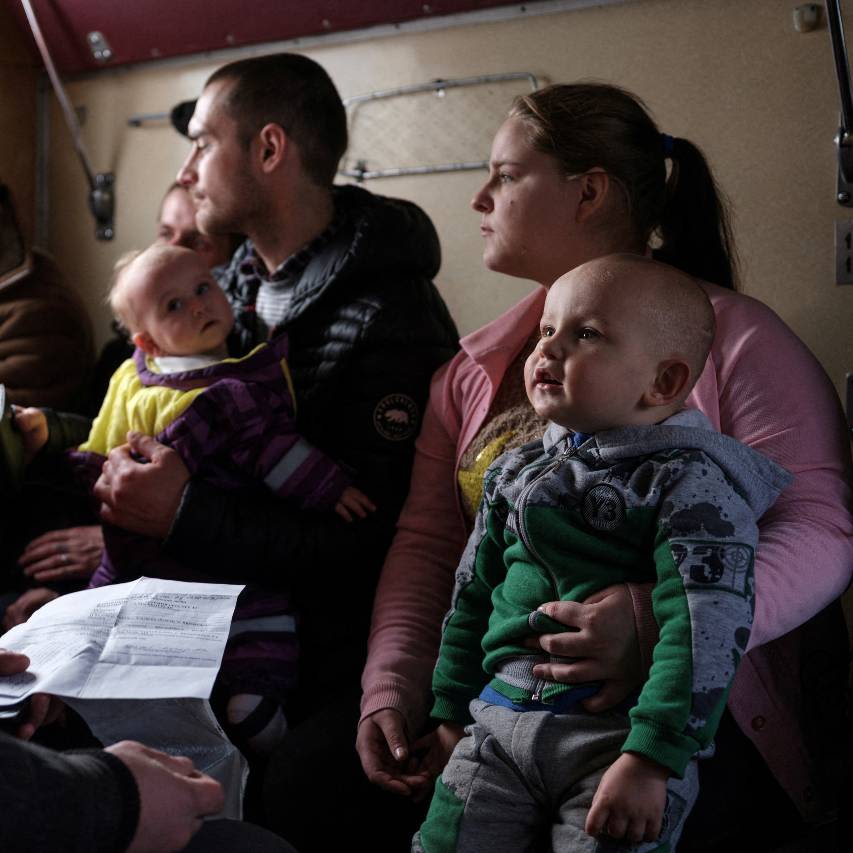
Russia is making gains in Ukraine's eastern province of Donetsk, claiming to have encircled the town of Bakhmut where the heaviest fighting has been taking place. Bakhmut has been hit by a relentless bombardment for months, as Russian forces attempted to use similar tacts that led to their capture of two cities further north – Sievierodonetsk and Lysychansk – in June and July.
After seven months of shelling, the battles in Bahkmut are spilling over to neighboring towns and villages.
This eastern Ukrainian city, located on the Bakhmutka River about 89 kilometers north of Donetsk, is under threat as Russian forces step up their offense almost a year since the conflict began.
A few kilometers west of the Ukrainian city has been at the heart of the war between Russia and Ukraine. In one village called Chasiv Yar, locals are trying to ignore the nearby artillery shelling and swiftly boarding up their windows.
Four shops remain open, including one small old-fashioned corner shop, defiantly and valiantly offering essentials like water, potatoes and garlic. Everyone is preparing for the worst.
It's a miracle anything makes it into these treacherous and dangerous war zones. But these places remain resilient. People come to these shops because they know they can talk to others, see a friendly face, get the latest news, as well as fresh bread.
Most shops are closed though, and many of the local people who have stayed are elderly or unemployed. The population used to be more than 25,000. Some locals say more than 60 percent of them have left.
Only one road is open going into Bakhmut. All other roads are cut off. This road is crucial for the Ukrainians because it is the main road for the military based here.
There is still power here. There is still wi-fi. Life goes on. But the question is, for how long?
The battle in Bakhmut has been ongoing for seven months. The shelling is getting worse and louder, and that is definitely coming closer to civilian areas like Chasiv Yar.
Everyone is preparing for the worst.
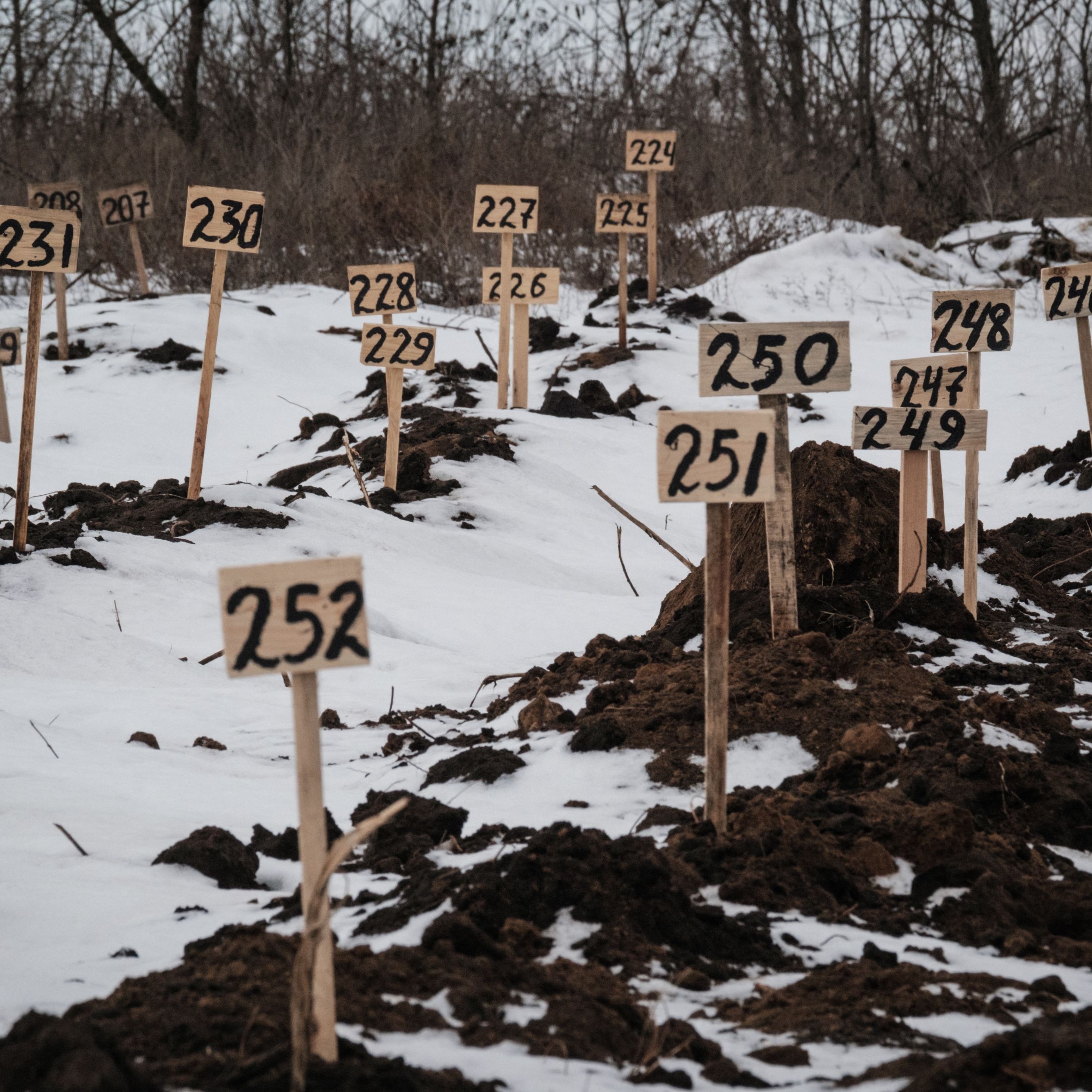
Inside Ukraine's shattered hospital infrastructure
Iolo ap Dafydd in Lyman, Ukraine
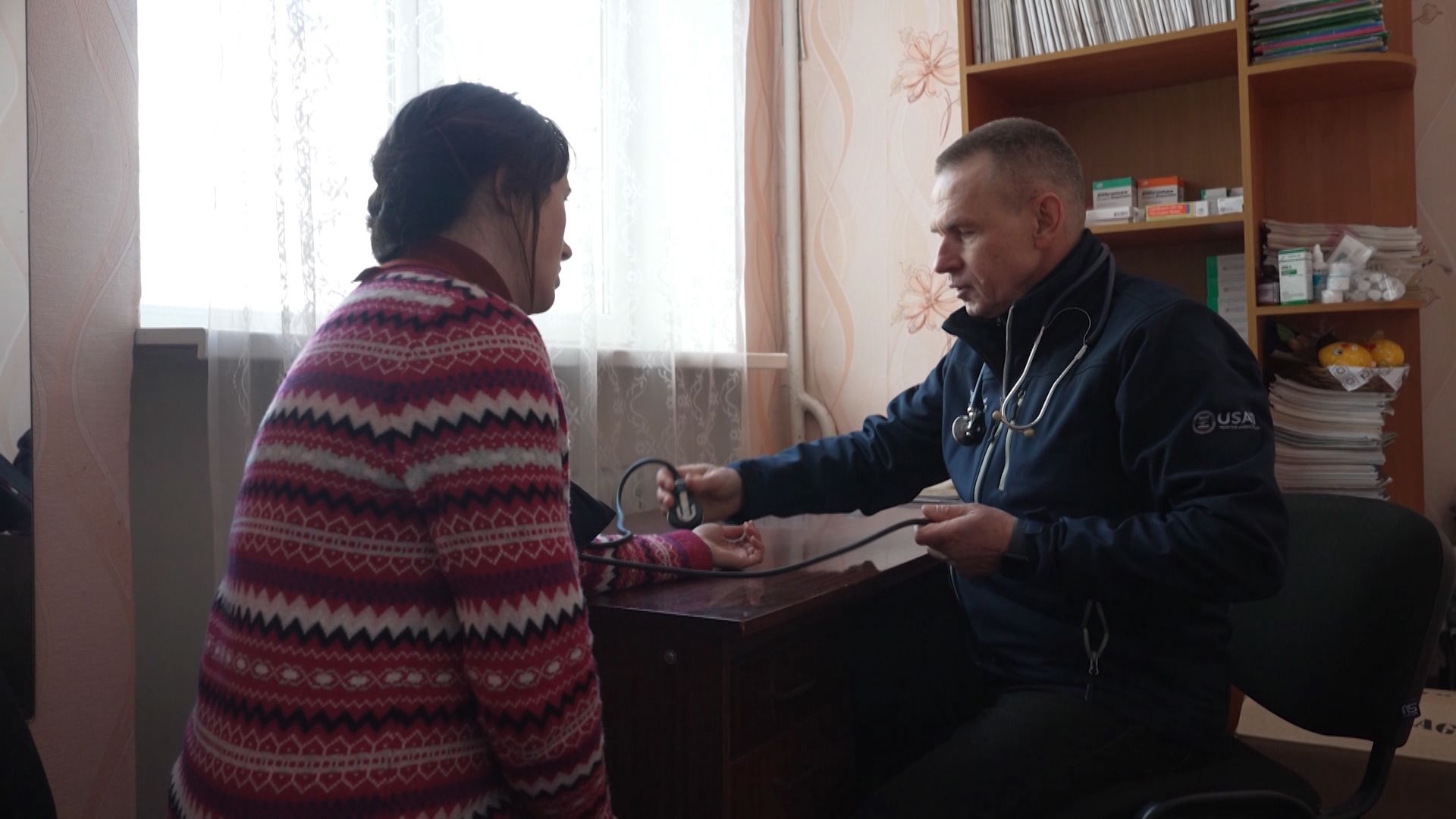
Months after the Russians left, many Ukrainian towns are still devastated by war. Almost a year since it began, life won't be normal for people in eastern Ukraine for possibly many years to come.
In Lyman only two doctors remain, to serve a city and the surrounding area where normally tens of thousands of people would live and work. There are more soldiers than civilians here now.
It's not a forgotten area, but it is mostly destroyed. More than three-quarters of the city was damaged during the fighting last year.
One of the main hospitals had only recently had its maternity unit modernized. Now it's ready to be demolished.
"The medicine infrastructure is damaged and destroyed by almost 90 to 95 percent," says Andriy Rebrov, Lyman's chief of primary medical care. "Almost all the clinics that offer emergency medical aid, where family doctors worked have been destroyed and people have been left without any first aid help."
Such shattered infrastructure is unlikely to attract the mothers and children who fled to western Europe back to their hometowns. Millions more Ukrainians are refugees within their own country.
At a former nursery school, one of only two family doctors left in Lyman's province has mostly elderly patients. As well as dealing with flu and people suffering from post traumatic stress disorder, a larger health threat is feared: tuberculosis is on the rise.
"People now are living in unsanitary conditions, for instance in basements , and some are suffering from hypothermia," explains local GP Anatoliy Havrilenko. "They are in a stressful situation, and are having problems finding healthy food - and eating enough calories every day."
Years of rebuilding and hundreds of millions of dollars are needed in this one city alone, and Lyman has the same problems as many similar towns and cities in eastern Ukraine.
There's no running water, gas has only been partially reconnected, and although power is slowly being restored, most hospitals, schools, large buildings and homes have been partially or completely destroyed.
No wonder only an estimated few thousand people have returned to live here. The main road and rail bridges into Lyman are unusable - but for many of those who escaped, the lack of adequate healthcare may be an even bigger barrier to returning home.
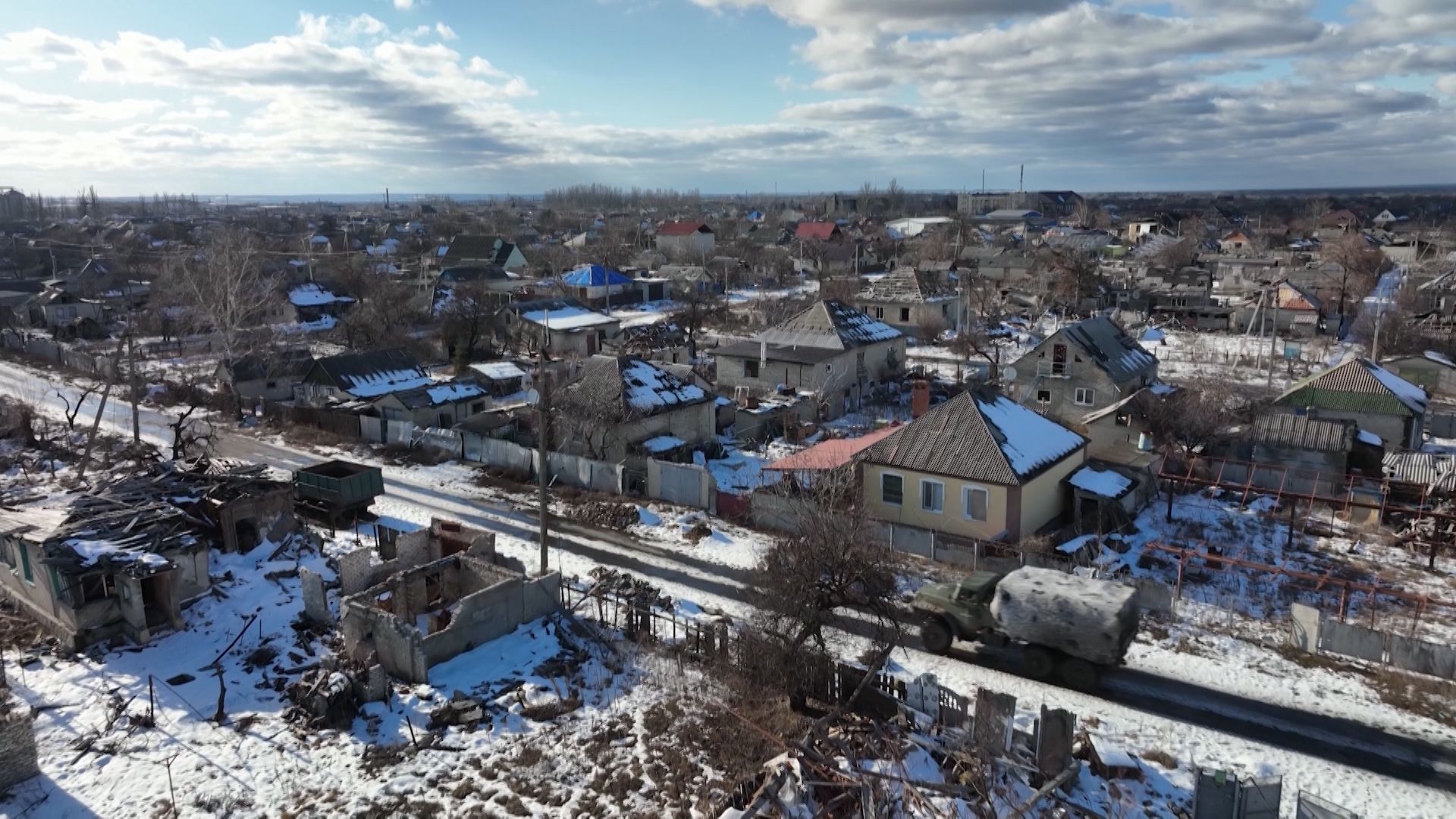
A Mobile app saving lives in Kyiv
By William Denselow in Kyiv
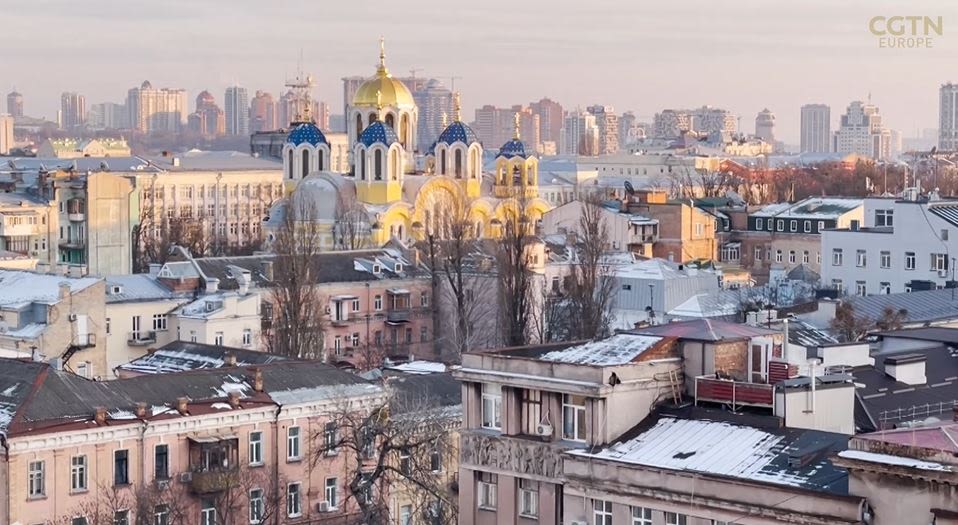
A mobile app giving warnings of air raids has become a life-saving device for people in Kyiv, said the deputy mayor.
Residents in the Ukrainian capital have had to adapt to life under the threat of missile attacks since the conflict with Russia began a year ago.
Crucial have been the shelters, especially the Kyiv metro system, and the speed at which people can get to safety.
Images have been beamed globally of residents huddling in the metro, which has the deepest station in the world, while missile attacks take place.
And technology has played an important part in warning citizens of attacks, with alerts sometimes given multiple times a day.
"I usually use the air alert map in the app, because it's quick and you can see how intense the alert will be and how long it will last," said Tetiana.
Deputy Mayor of Kyiv Petro Olenych said that any delay in receiving a notification could lead to tragedy.
"You have to get dressed and get to the shelter, which is already three to five minutes. So if a person receives a delayed notification or doesn't hear the speaker from the street, we can lose a life," he said.
One problem for the app has been power outages when there is no reception.
One resident, Valerii, said: "Сurrently, there are problems with the fact that sometimes we don't have a power supply in the city, thus there is no reception, so the notification may not come. But it's cool that we have apps like this."
Kyiv does have an air raid alert system on the city's streets but the mobile app is a better guarantee that people hear it and it is especially important in rural areas.
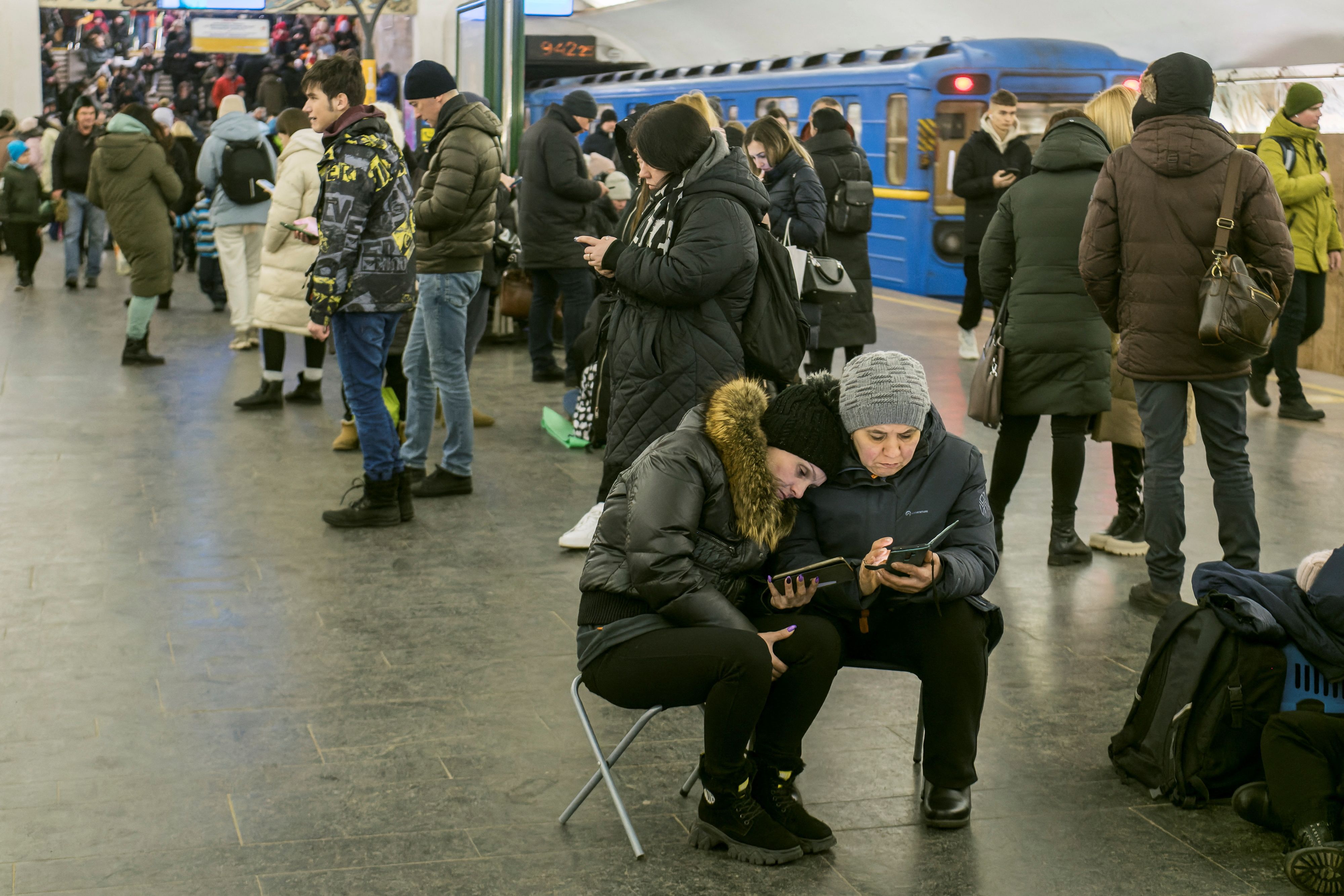
No End In Sight
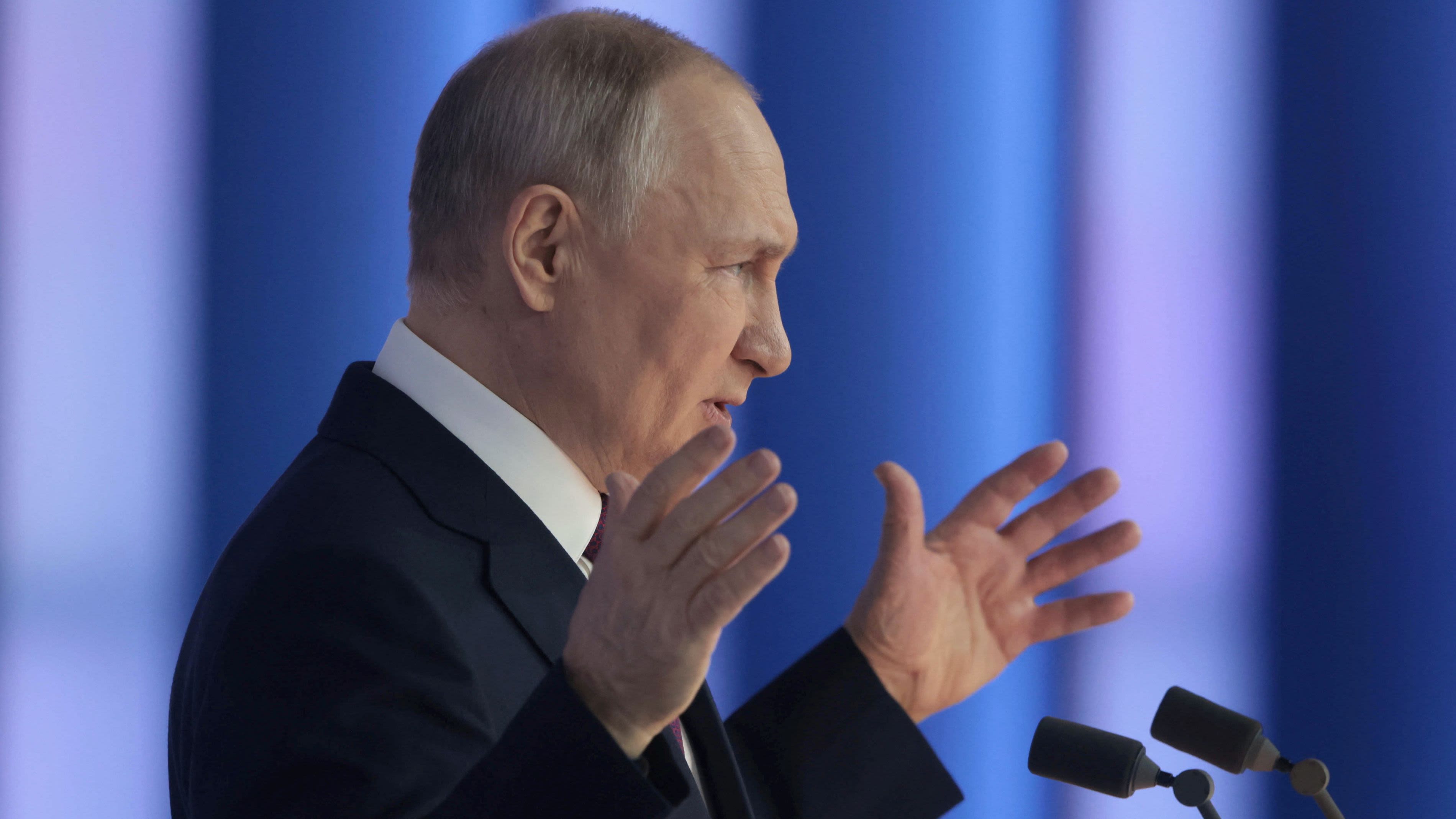
Putin says NATO's 'one goal' is to break up the Russian Federation
President Vladimir Putin cast the confrontation with the West over the Ukraine war as an existential battle for the survival of Russia and its people - and said he was forced to take into account NATO's nuclear capabilities.
A year since ordering 'the special military operation' in Ukraine, Putin is increasingly presenting the war as a make-or-break moment in Russian history - and saying that he believes the very future of Russia and its people is in peril.
"They have one goal: to disband the former Soviet Union and its fundamental part - the Russian Federation," Putin told Rossiya 1 state television.
NATO and the West dismiss such narrative, saying their objective is to help Ukraine defend itself against an unprovoked attack.
Russians living near the border with Ukraine have seen dramatic changes in the last year. Aljosa Milenkovic reports from Rostov on Don.
Russians living near the border with Ukraine have seen dramatic changes in the last year. Aljosa Milenkovic reports from Rostov on Don.
Putin said the West wanted to divide up Russia and then control the world's biggest producer of raw materials, a step, he said, that could lead to the destruction of many of the peoples of Russia, including the ethnic Russian majority.
"I do not even know if such an ethnic group as the Russian people will be able to survive in the form in which it exists today," Putin said. He said the West's plans had been put to paper, though did not specify where.
The United States has denied that it wants to destroy Russia, while President Joe Biden has warned that a conflict between Russia and NATO could trigger World War Three, though he has also said Putin should not remain in power.
Putin said the tens of billions of dollars' worth of U.S. and European military assistance to Ukraine showed that Russia was now facing off NATO itself - the Cold War nightmare of both Soviet and Western leaders.
Russia's official nuclear doctrine allows for the use of nuclear weapons if they - or other types of weapons of mass destruction - are used against it, or if conventional weapons are used which endanger "the very existence of the state."
Putin has signalled he is ready to rip up the architecture of nuclear arms control - including the big powers' moratorium on nuclear testing - unless the West backs off in Ukraine.
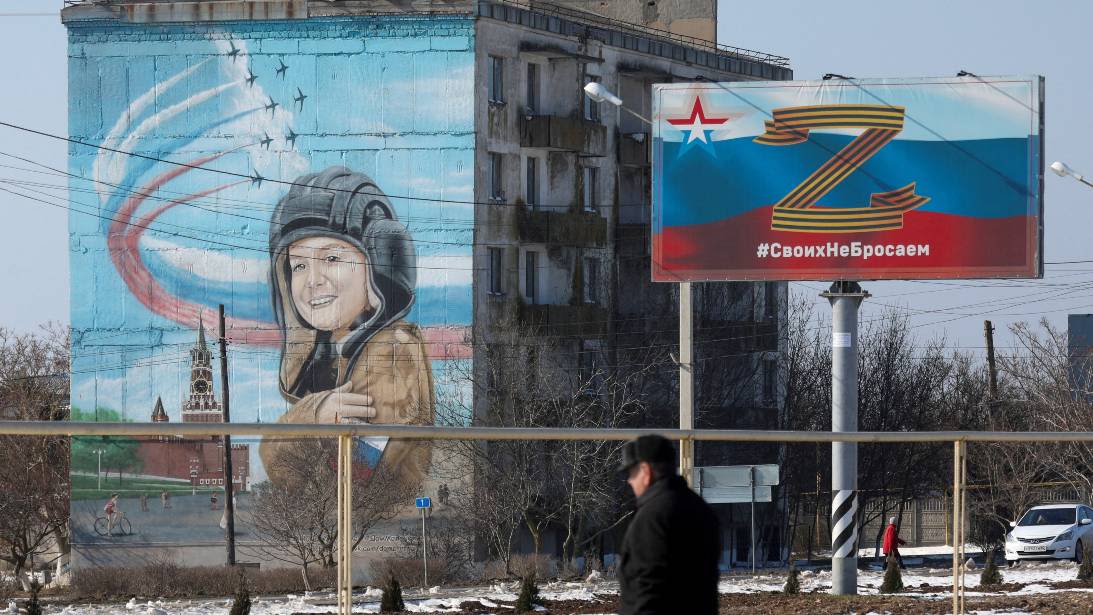
Zelenskyy remains defiant
Ukraine says it will not rest until every last Russian soldier is ejected from Ukraine, including from Crimea which Russia annexed in 2014.
On the anniversary of the conflict, President Volodymyr Zelenskyy hailed Ukraine and its people for fighting back against Russia and vowed victory.
"We endured. We were not defeated. And we will do everything to gain victory this year," Zelenskyy said.
Ukraine's Defense Minister Oleksiy Reznikov said his forces were making plans to push Russian troops out of the country.
"A year ago, it was difficult for us to get serious weapons. Today, civilized countries see that you are the shield of Europe in the east," Reznikov told the armed forces, adding: "There will be a counteroffensive. We are working hard to prepare and secure it."
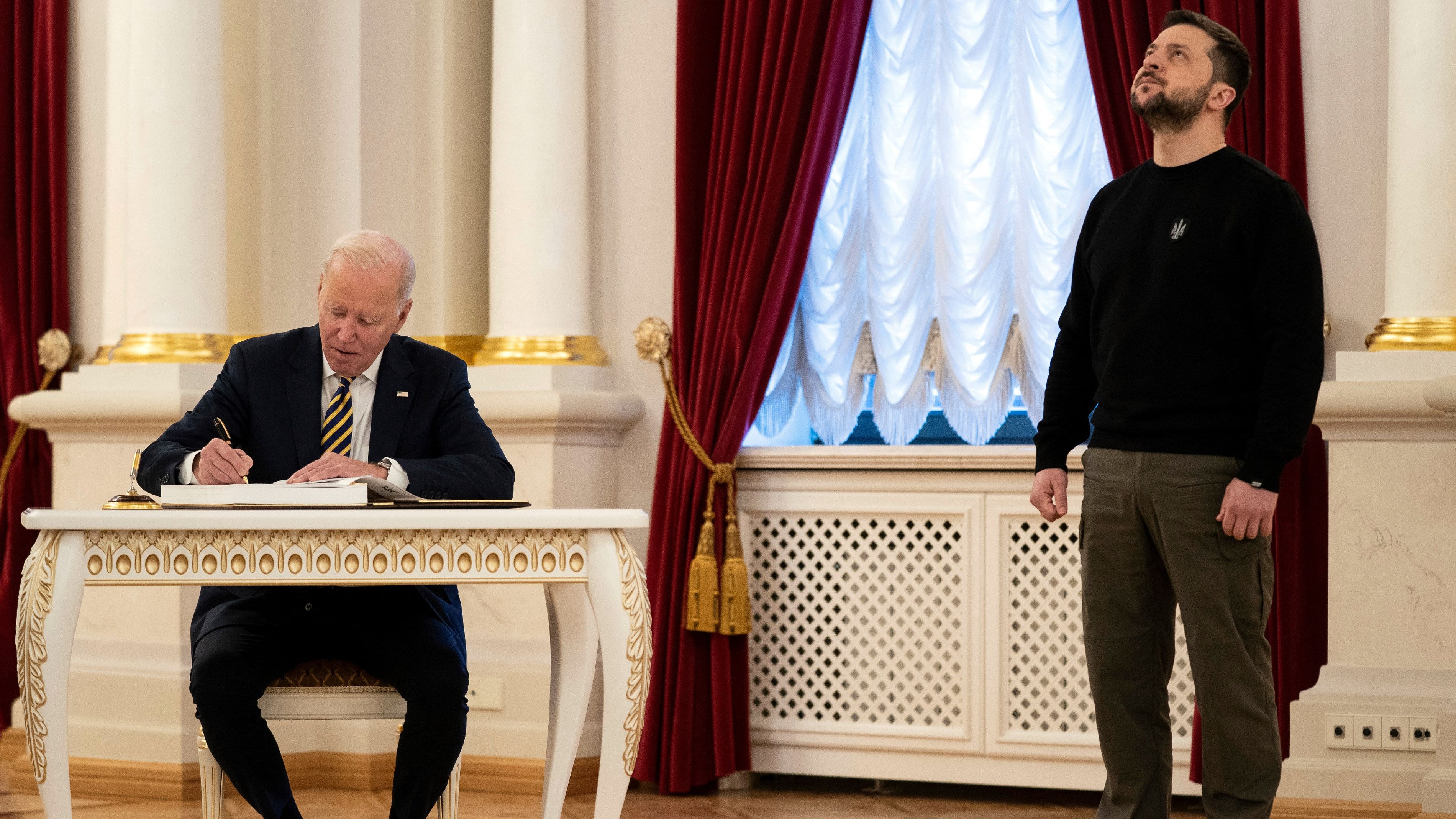
U.S. President Joe Biden met Ukraine President Volodymyr Zelenskyy in Kyiv on Monday./Evan Vucci/AFP
U.S. President Joe Biden met Ukraine President Volodymyr Zelenskyy in Kyiv on Monday./Evan Vucci/AFP
Meanwhile, China has called for urgent peace talks as it released its plan to end the conflict in Ukraine, but Western powers quickly rebuffed the proposals while warning against Beijing's close ties to Moscow. The 12-point paper called for a "political settlement" of the crisis.
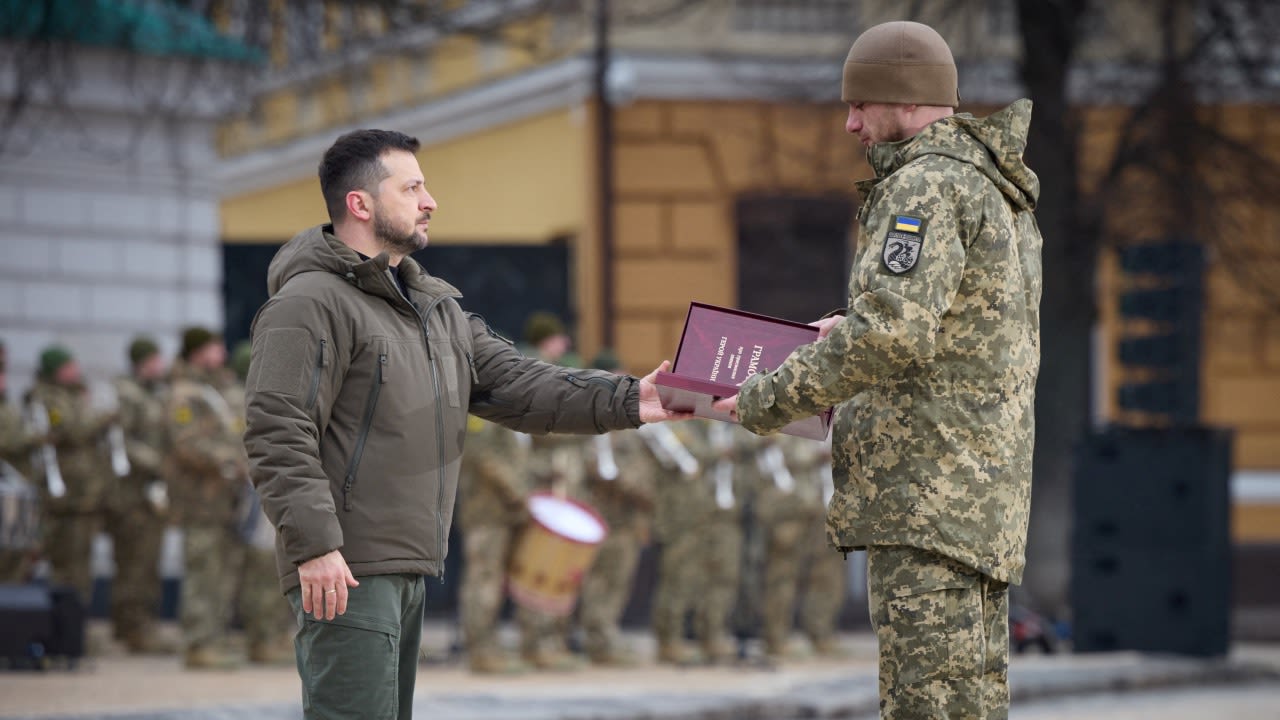
Europe One Year On
Alex Cadier in Brussels, Belgium
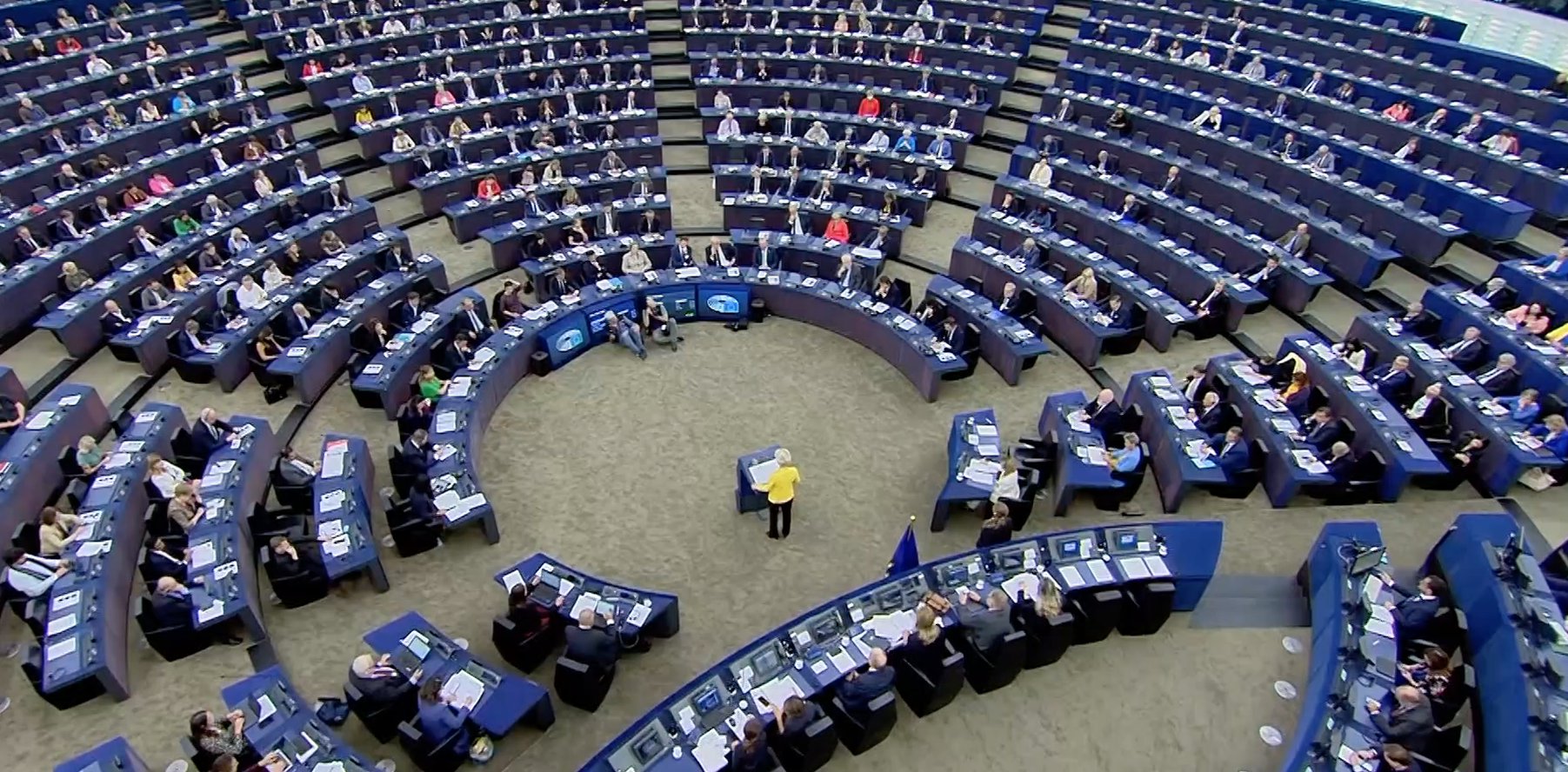
The conflict in Ukraine has brought massive changes to Europe.
The economic impact of increased cost of gas and oil hurt consumers across the continent, which led the governments to offer huge support to businesses as well as individuals.
As countries chose to switch away from Russian fossil fuels to Liquefied Natural Gas (LNG), they also increased their investment in green energy. This gave way to new diplomatic splits over the best way to support Ukraine and also how best to pursue peace.
Russian tanks rolled across the border into Ukraine's territory on February 24, 2022, in what Moscow calls a 'special military operation' – but Kyiv and its western allies call it a full-scale invasion. It was the moment that changed the course of peace in Europe.
In a matter of days, the European Union had passed sanctions against Russia and sent millions of dollars of support to Ukraine. However, the consequences of Russia's offensive sent shockwaves through the very foundations of the EU and forced the bloc to make some fundamental changes real quick.
Until the conflict began, the EU had never provided lethal weaponry to a non-member state, but a year in, the bloc has provided over $3 billion worth of military aid to Kyiv. During the course of the conflict, Europe has also had to deal with another problem – its reliance on Russian fossil fuels.
The EU got 40 percent of its gas and nearly 30 percent of its oil from Russia until February 2022. And once it decided to switch from it, energy prices skyrocketed, reaching record highs last summer and hitting European households and businesses hard.
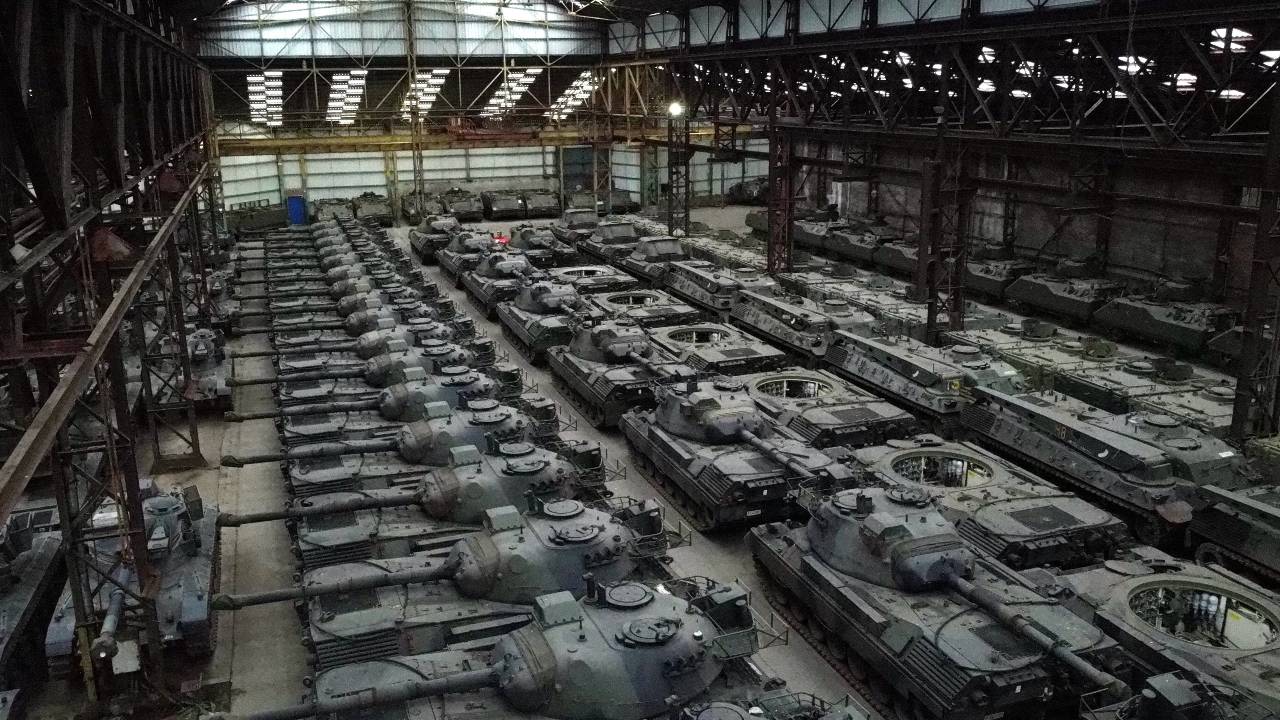
German-made Leopard 1 tanks and other vehicles in Belgium, some could be shipped to Ukraine. /Yves Herman/Reuters
German-made Leopard 1 tanks and other vehicles in Belgium, some could be shipped to Ukraine. /Yves Herman/Reuters
The European Commission says the bloc has weaned itself off of Russian fossil fuels and prices have plummeted.
"We have shown that we can face off Russian blackmail when it comes to energy," said Dana Spinant, Deputy Chief Spokesperson of the European Commission. "Remember where we were one year ago in relation to our dependence on Russian fossil fuels.
"We have also managed not only to compensate and ensure our security of supply but to help bring prices down."
The EU also looked to its eastern borders and started the process of adding new members to the union.
"I want the people of the Western Balkans, of Ukraine, Moldova and Georgia to know: You are part of our family, your future is in our Union, and our Union is not complete without you!" said Ursula Von der Leyen, President of the European Commission.
Despite political will from the EU, the road to accession will be a challenging one, with some member states urging Brussels to tone down the promises of membership, as the process could take a decade.
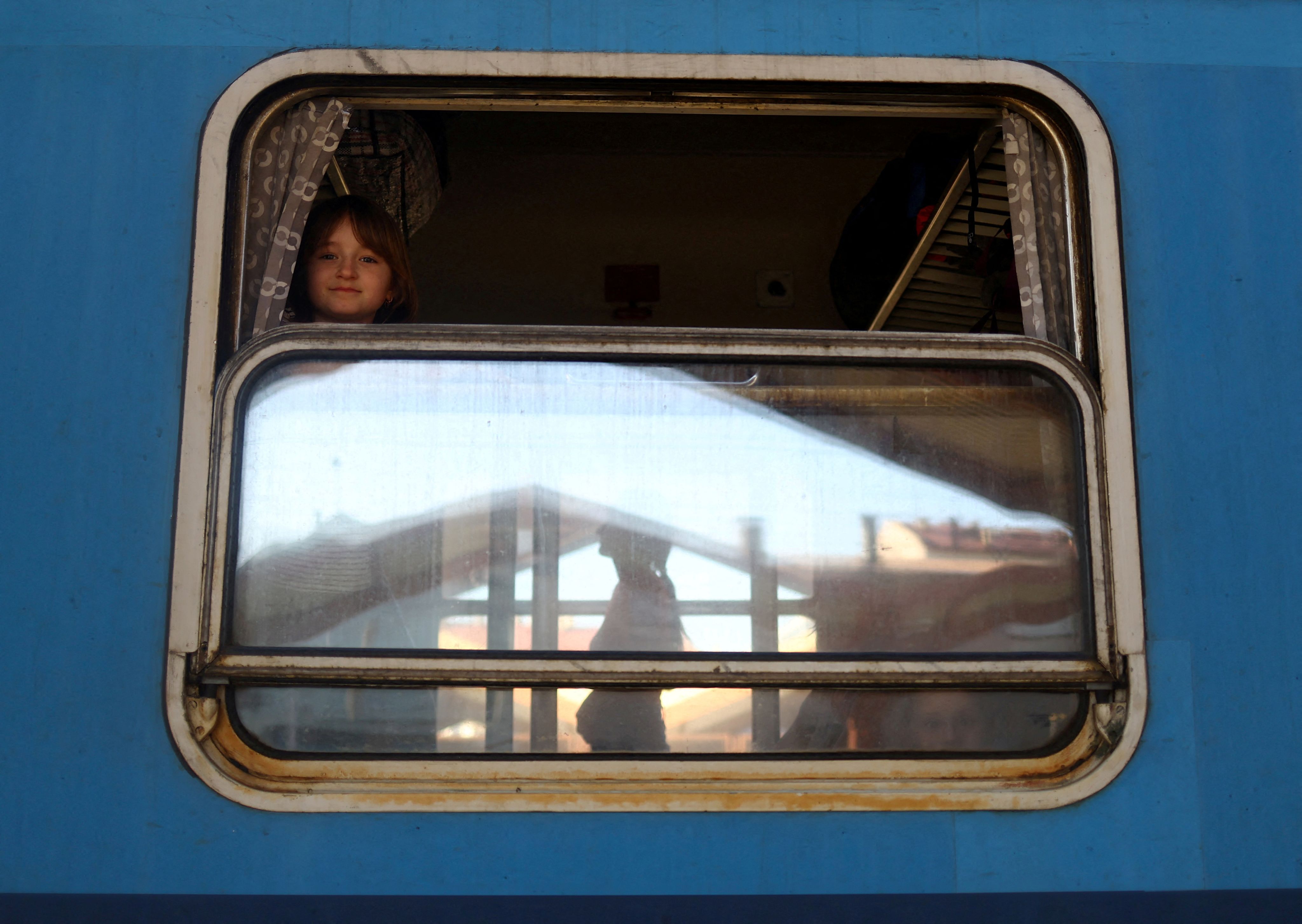
8-year-old Ukrainian refugee from Kharkiv looks out of a train window bound for Warsaw.REUTERS/Hannah McKay
8-year-old Ukrainian refugee from Kharkiv looks out of a train window bound for Warsaw.REUTERS/Hannah McKay
The EU also activated emergency mechanisms to allow refugees from Ukraine to live and work in member states – an estimated eight million Ukrainians have since fled the horrors of the conflict to seek refuge elsewhere in Europe.
Russia's attack on Ukraine has been a stress test for the continent, the likes of which the EU has never seen. There have been disagreements, debates and even tensions within the bloc. Nevertheless officials in Brussels are clear about two things – they say their support of Ukraine is unwavering and the EU is now stronger, and more united than ever.
